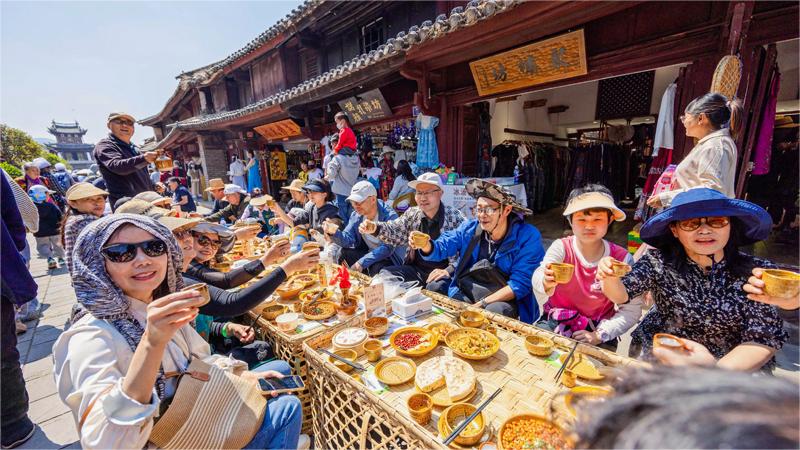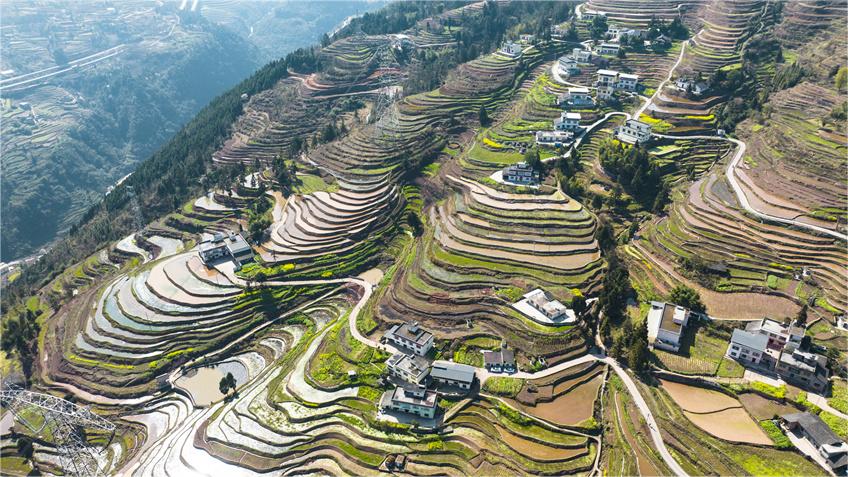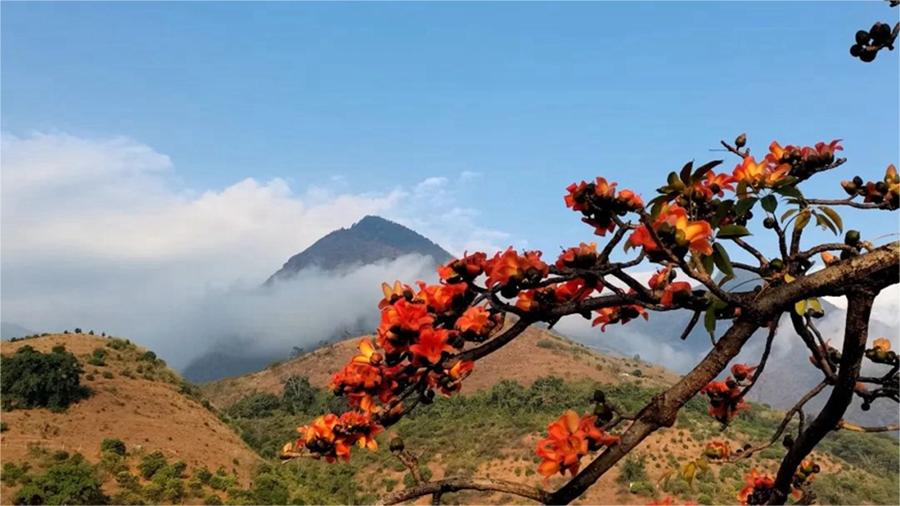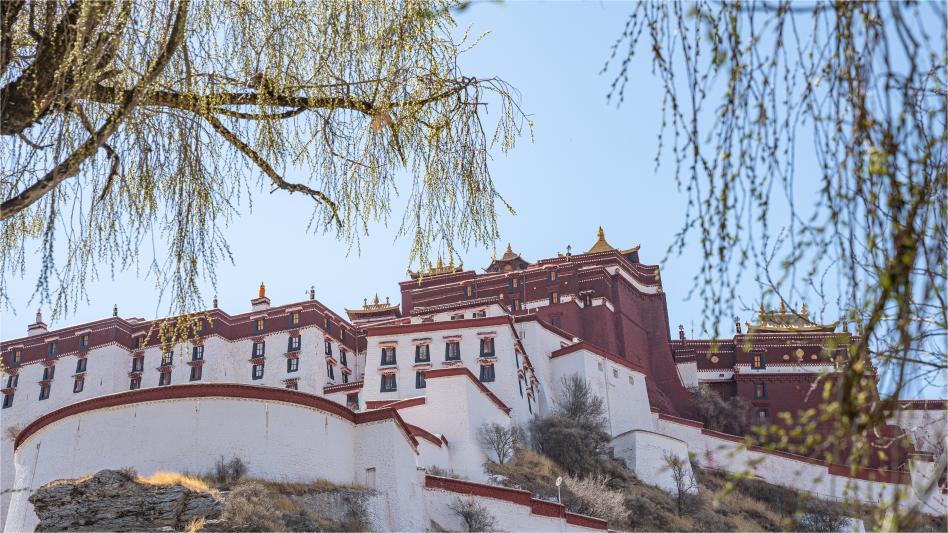Vineyards thrive at abandoned mining pits in NW China's Ningxia
The former sites of nearly 10 large mining zones in northwest China's Ningxia Hui Autonomous Region have been transformed into a prosperous wine industry hub, serving as an impressive green corridor and "purple treasure trove" for local communities.
Nestled at the eastern foothills of the Helan Mountain, an important ecological barrier in northwest China, the area, which used to be dotted with abandoned mining pits, is now the largest concentrated and contiguous wine grape producing region in China.
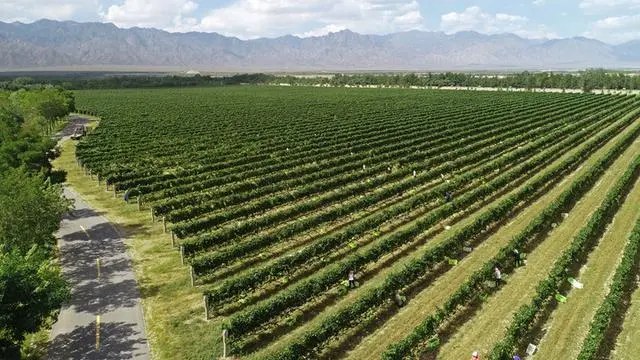
Photo shows a grape planting base at the eastern foothills of the Helan Mountain in northwest China's Ningxia Hui Autonomous Region. (Xinhua/Wang Peng)
With a total area of 583,000 mu (about 38,866.67 hectares), wine grapes cultivated in the hub account for about 35 percent of the country's total wine grape planting area.
Related businesses in the hub have provided nearly 130,000 jobs for local farmers, who earn about one-third of their income from the local wine industry.
In Zhenbeibu township, Xixia district, Yinchuan city, capital of Ningxia, where over 100 sand and gravel factories and mining sites were once scattered, more than 20 wine vineyards and 12 featured B&B hotels have sprung up, receiving 600,000 visits annually.
Just over two decades ago, the township’s local residents were stricken by frequent geological disasters including debris flow and mountain collapse, water loss and soil erosion, as well as serious dust pollution, as large-scale and disorderly mining activities that began in the 1950s severely damaged the local ecological environment.
Su Nan, an official from the Yinchuan bureau of natural resources, vividly recalls the scenes from those days.
"At its worst, the average depth of the surface mining pits reached 40 meters, and the damaged land area exceeded 15 square kilometers. The mining areas were largely barren, with exposed soil and rocks, presenting a dismal sight," Su said.
A ray of hope emerged in 2010 when Ningxia launched a project to build a grape-themed cultural corridor with a total area of 1 million mu along the eastern foothills of the Helan Mountain. Three years later, local legislation was enacted to protect the wine producing area.
Meanwhile, governments at all levels actively explored new paths and models to integrate the wine industry with efforts to strengthen ecological protection and restoration.
In 2021, the National Open Development Comprehensive Pilot Zone for the Grape and Wine Industry was established in Ningxia, and special plans for ecological protection and restoration in the Helan Mountain and high-quality development of the wine industry at the eastern foothills of the mountain were officially implemented.
The mining zone in Zhenbeibu township, located at the core of the grape-themed cultural corridor, seized the opportunity brought by favorable policies to vigorously promote the transformation of the mining industry and the ecological restoration of the mining pits.
Local authorities invested nearly 2 billion yuan in ecological protection and restoration projects targeting abandoned mining pits in Zhenbeibu township, while implementing a slew of measures to attract social capital, sparing no effort to cultivate a wine industry base and extend the value chain of ecological products.
Coming up with solutions tailored to local conditions, the local government closed and integrated small, scattered, and disorderly mining sites in the township, retaining only six enterprises for concentrated green mining operations.
Since the mining zone of Zhenbeibu township happened to be located at a latitude of 38 degrees north, ideal for grape cultivation, local authorities took full advantage of the old quarries and abandoned mining pits within the zone to carry out ecological restoration and implement a series of comprehensive improvement projects.
As a result, featured industries, with the wine industry as an archetype, have flourished on their respective paths of green and sustainable development.
Yuanshi Vineyard, a major winery in Zhenbeibu township, is a typical example of the mining zone's transformation journey.
Yuan Hui, chairman of Yuanshi Vineyard, used to work at a large quarry established by his father in the 1980s that created nearly 6,000 mu of pits.
In 1996, Yuan decided to join the efforts to restore the ecological environment of the mining zone after witnessing the "aftermath" of the mining activities firsthand. With strong support from the government, he dove headfirst into planting shelterbelt forests on the barren rocky land.
Coinciding with Ningxia's efforts to develop the wine industry, Yuan began constructing a winery on the mining pits and planting winemaking grapes on the leveled and improved land in 2008.
Subsequently, Yuanshi Vineyard joined hands with the local government to intensify the transformation of 18,000 mu of abandoned mining pits. By building vineyards, expanding the winery's scale, and constructing a leisure and sports park and an ecological park, they turned the abandoned mining pits into a beautiful garden-style winery.
In 2015, Yuanshi Vineyard began exploring the integration of culture and tourism, creating an eco-industrial park combining the primary, secondary, and tertiary industries.
More businesses of this kind have thrived at the abandoned mining pits, thanks to Ningxia's persistent efforts to pursue ecological restoration and industrial diversification.
Various wineries featuring garden-style layouts, ecological beauty, and cultural heritage with distinctive traditional Chinese aesthetic elements have flourished amid the lush greenery at the foothills of the Helan Mountain.
A diverse range of businesses in industries such as wine, tourism, culture, catering, B&B hotels, and study tours have merged into the locality’s beautiful ecological environment, making it a new popular destination for people seeking a connection with nature.
Photos
Related Stories
- Feature: Spain's winegrower expects more Chinese investment to promote Spanish wine
- Ice wine industry pours new life into SW China's mountainous areas
- People taste wines during Slovenian Wine Festival
- Trending in China | Qiaohuaxiang liquor: A unique blend of sweetness and bitterness
- Feature: From Tuscany to Tianjin, Italian winery explores opportunities in Chinese market
- Interview: China perfect market for Europe's wine industry, says Slovak winemaker
Copyright © 2024 People's Daily Online. All Rights Reserved.






